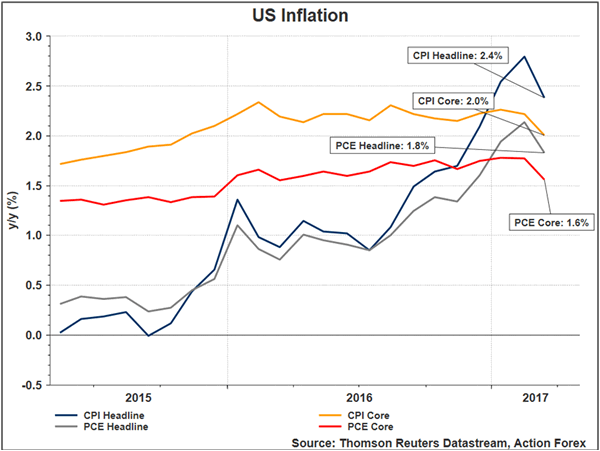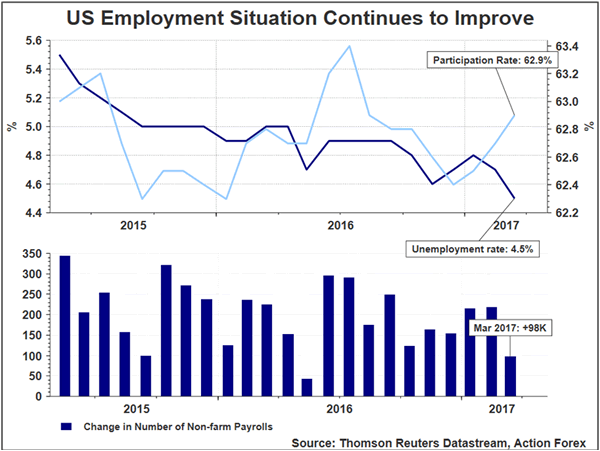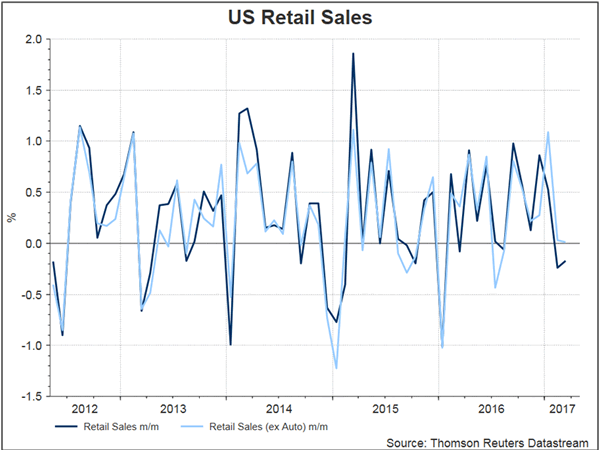As widely anticipated, the FOMC left the target range for the Fed funds rate unchanged at between 0.75- 1%. Although the accompanying statement was largely unchanged from the previous month, the implications were important in light of the slowdown in the first quarter. While acknowledging the recent weakness in growth and inflation, policymakers attributed it to ‘transitory effects’. The downplaying of 1Q17’s disappointments underpinned the Fed’s determination to carry on its normalization plan. The FOMC maintained its economic outlook and the gradual rate-hike approach. We continue to expect two more rate hikes this year with one coming in June.
It is undeniable that US macroeconomic indicators surprised to the downside in 1Q17: GDP expanded at a modest +0.7%, core CPI fell -20 bps to 1.6% y/y since the previous meeting, while consumer spending rose only modestly. The FOMC acknowledged all these weaknesses. As suggested in the statement, the central bank noted that ‘growth in economic activity slowed’ during the intermeeting period. Yet, it pointed out that ‘the labor market has continued to strengthen’, ‘job gains were solid, on average, in recent months, and the unemployment rate declined’. It acknowledged that ‘household spending rose only modestly, but the fundamentals underpinning the continued growth of consumption remained solid’. The statement affirmed that ‘the slowing in growth during the first quarter as likely to be transitory’. Yet, policymakers used a less strong tone in stressing that the inflation weakness was transitory. As noted in the statement, the Fed indicated that ‘excluding energy and food, consumer prices decline in March and inflation continued to run somewhat below 2%’. The Fed continued to guide that monetary accommodation should support ‘a sustained return to 2% inflation’. Overall, near-term risks to the economic outlook appeared ‘roughly balanced’ and the members would continue to ‘closely monitor inflation indicators and global economic and financial developments’.
The approach of the Fed’s rate hike schedule would remain ‘gradual adjustments’ and ‘gradual increases’. Guidance on the reinvestment policy stayed unchanged with the FOMC reiterating that the reinvestment would continue ‘until normalization of the level of the Fed funds rate is well under way’. Despite heightening speculations that the Fed would begin unwinding its balance sheet (worth of US$ 4.5 trillion) later this year, the Fed refrained from offering any hints on this issue. The Fed’s stance to looking through the soft data in the first quarter signals its inclination to hike rate in June. Certainly, any action would be data-dependent but the bar seems to be high for the Fed to decide not raise the policy rate in the coming month. Explicit guidance of the balance sheet normalization would unlikely come unless the members have reached a consensus on the scaling-back of redemptions and the balance on the mix of Treasury securities and MBS in its portfolio.
















